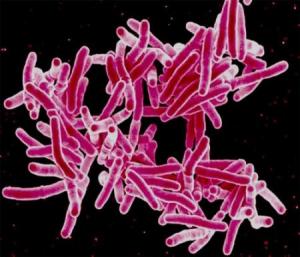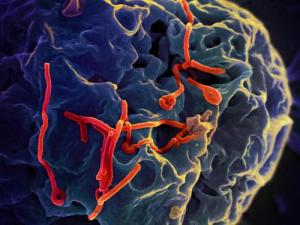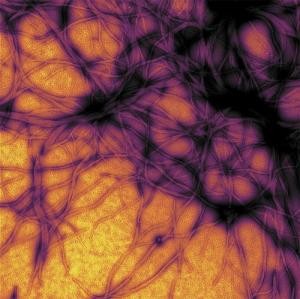CRISPR helps find new genetic suspects behind ALS/FTD
NIH-funded researchers at Stanford University used the gene editing tool CRISPR-Cas9 to rapidly identify genes in the human genome that might modify the severity of amyotrophic lateral sclerosis (ALS) and frontotemporal dementia (FTD) caused by...
NIH experts call for transformative research approach to end tuberculosis

Scanning electron micrograph of Mycobacterium tuberculosis bacteria, which cause TB.
Monoclonal antibodies crucial to fighting emerging infectious diseases, say NIH officials

Ebola virus particles (red) on a larger cell. ZMAPP, a potential treatment for Ebola, includes a cocktail of...
NIAID scientists assess transmission risk of familial human prion diseases to mice

Prion protein fibrils.
This World Kidney Day, shine a spotlight on women’s health
Chronic kidney disease affects more women than men, but most people with this condition don’t know they have it. This World Kidney Day, the National Institute of Diabetes and Digestive and Kidney Diseases (NIDDK), part of the National Institutes of...
Antiviral drug not beneficial for reducing mother-to-child transmission of hepatitis B when added to existing preventatives
Tenofovir disoproxil fumarate (TDF), an antiviral drug commonly prescribed to treat hepatitis B infection, does not significantly reduce mother-to-child transmission of hepatitis B virus when taken during pregnancy and after delivery, according to a...
The brain’s internal clock continually takes its temperature
Circuits in the brain act as an internal clock to tell us it is time to sleep and to control how long we then stay asleep. A new study in flies suggests a part of that clock constantly monitors changes in external temperature and integrates that...
Scientists show how the brain may be wired for drinking fluids
Scientists uncovered a high-resolution map of the wiring inside the mouse brain’s thirst center. With these blueprints, they could trick mice into becoming light or heavy water drinkers. Moreover, they discovered a quenching circuit that knew when to...
High uptake and use of vaginal ring for HIV prevention observed in open-label study
Nearly 90 percent of participants in an open-label study of a vaginal ring infused with a drug to prevent HIV are using the monthly ring at least some of the time, according to an interim analysis of study data. In addition, the rate of HIV infection...
Emergency Department Data Show Rapid Increases in Opioid Overdoses
Data from emergency departments (EDs) show that the U.S. opioid overdose epidemic continues to worsen, according to the latest Vital Signs report by the Centers for Disease Control and Prevention (CDC).








